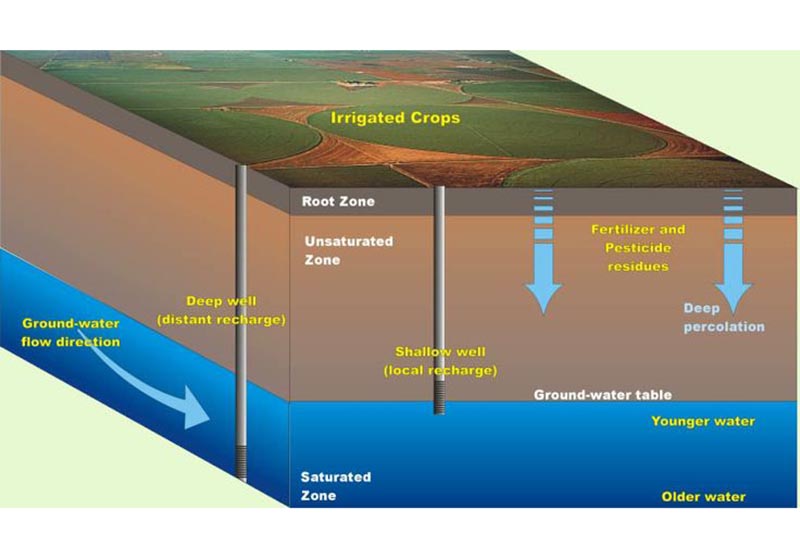Nitrate in groundwater data & assessment
Nitrate contamination of groundwater is a growing concern in several areas of the state, because contaminated drinking water can cause serious health risks. We compiled data from many sources to assess where groundwater protection and cleanup efforts may be most effective and necessary. These data and our assessment are in a map-based presentation below.
Nitrate is a concern for drinking water aquifers
Public water supply wells and individual residential wells have been contaminated in some areas of the state. These include the Sumas-Blaine Aquifer in Whatcom County, the Lower Yakima Valley, and the Columbia River Basin.
Nitrates can get into groundwater from many sources, including fertilizers, manure on the land, and liquid waste discharged from septic tanks. Natural bacteria in soil converts various forms of nitrogen into nitrate. Rain and irrigation water can carry nitrate down through the soil into groundwater. Groundwater is a source of drinking water for many people.
Nitrate contamination comes with health risks
Nitrate contamination is a concern because contaminated drinking water can reduce the ability of red blood cells to carry oxygen. This can cause serious health problems, especially for infants.
- Nitrate in Drinking Water is a page at the Department of Health (DOH) that describes the risks.
- Private Wells: Information for owners (PDF) is a DOH publication that talks about water testing.
Data informs us about risk
The Nitrate Project is a map-based compilation of groundwater data that identifies groundwater areas across the state that are most vulnerable to nitrate contamination. We present this information to protect problem areas and to help residents and local jurisdictions become informed about risks. See the map for data, including recommended Nitrate Priority Areas.
The information in the map is based on monitored nitrate levels, geology, soils, irrigation, land use, USGS risk maps and topography. Washington Nitrate Prioritization Project is the technical report.
Partnerships protect the public
This project was a collaboration with Washington departments of Health and Agriculture, as well as the U.S. Environmental Protection Agency, U.S. Natural Resource Conservation Service, U.S. Geological Survey, and the Washington Conservation Commission.Millions of dollars have been spent to deal with nitrate contamination of groundwater. Once aquifers are contaminated, it is difficult for them to recover. We are working together to understand the risks and opportunities for improvement.
Related links
- Washington Nitrate Prioritization Project is the technical report
- Nitrates, Blue Baby Syndrome, and Drinking Water: A Factsheet for Families (PDF) comes from Pediatric Environmental Health Specialty Units at the University of Washington
- Groundwater quality assessment includes Active groundwater studies and published reports
- Estimating nitrate groundwater impacts discusses a spreadsheet computer model designed to predict the impacts of excess farm-field soil nitrate
- Lower Yakima Valley Groundwater Management Area webpage
Contact information
Collen Keltz
Communications Manager
colleen.keltz@ecy.wa.gov
360-791-3177


